Epiphany, or King’s Day passed on January 6, and Lent will commence on Ash Wednesday, March 5—that’s the day after Fat Tuesday—the festival’s climax, the last day for gluttony and excess before one gives up something “of the flesh” for Lent. Yes, it’s time for Carnaval (Carnival is perhaps the more common spelling), or as we know it most commonly in the US, Mardi Gras.
The roots of various world Carnaval traditions—which, in addition to New Orleans, still take place annually in nations in every continent but are most associated with New World countries that experienced colonization and the confluence of multiple cultures—are deep and embody a complex convergence of religious/spiritual traditions, performance tropes and musical styles, rhythms like salsa and Frevo, well known costumed figures like the Plague Doctor (Venetian Carnival), and historic legacies such as slavery. There are those who argue with that the African roots for Carnaval traditions are dominant, given that the African diaspora plays a vividly important role in the creative evolution and rituals of the season. Many view the Catholic religious calendar to be incidental or simply a European gloss on an already thriving and ancient tradition of street theater, masquerade (a common element worldwide) and revelry.
Enjoy this small selection of Carnaval images, chosen to convey the diversity and age of the experience, and check out the happenings at the Worcester Center for Crafts, listed below. WCC received a Mass Humanities project grant for the programming accompanying this exhibit.
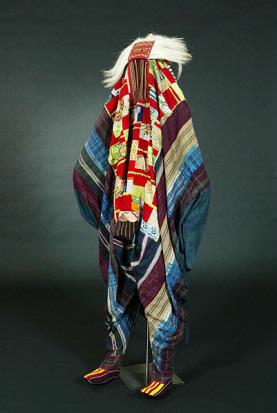
Engungun are masked and costumed figures from the Yoruba culture, which flourished in coastal Western Africa from 1100-1700 CE; Engungun costumes are believed to influence masquerade elements in Carnaval.
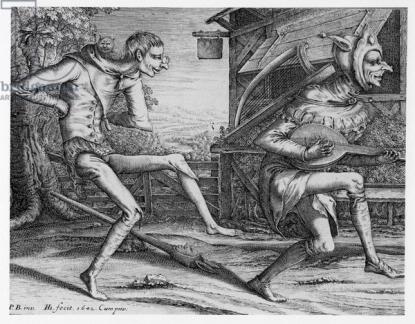
Two Fools of the Carnival engraved by Hendrik Hondius, orignal by Pieter Bruegel the Elder, Flemish, 1642
(This image points to the European origins of “Vulgar Comedy” present in Carnival traditions)
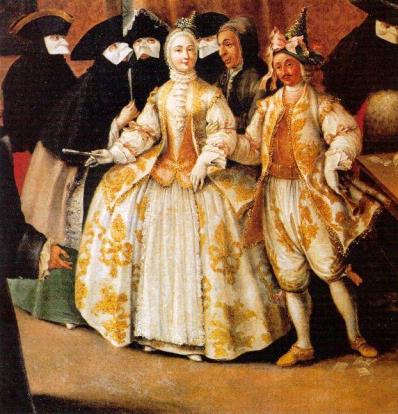
Il ridotto painting By Pietro Longhi, Venetian, 1740s, Collezione Banco Ambrosiano Veneto
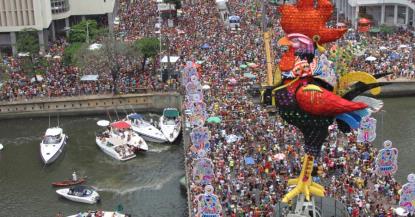
Galo da Madrugada (Rooster of Dawn) Parade in city of Recife, in Pernambuco, Brazil, 2013: the largest Carnaval parade in the world
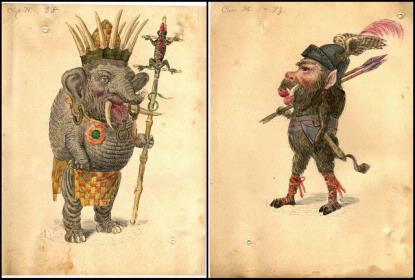
Costume design sketches, 1873, by members of the Mistick Krewe of Comus, a secret society organized by Anglo-Americans in New Orleans in the nineteenth century formed to put their own particular stamp on Mardi Gras traditions and their place in the social register.
¡Carnval! Exhibit at WCC and related programming: January 28 through March 16, 2014
Through video, photographs, hands-on interactive, and carnival crafts, masks and costumes, you’ll journey around the world to celebrate Carnival. Venice, New Orleans, Basel (Switzerland), Trinidad-Tobago, Recife (Brazil) and more are stops on your exploration of how creative play and community combine. Although a Roman Catholic custom, Carnival is celebrated the world round with masquerade balls, parades, and more—and with so much flashing fashion and fun to be had, it’s not hard to see why.
Programs
- Feb. 1: Masquerade Party, 7:30-10:30 pm
- Feb. 8: From the Backstreets to Mainstreet: The Transition of Mardi Gras Indians from Street Performers to Afrocentric Artists by Cynthia Becker, BU (snow date: 2/15) 2 pm, FREE
- Feb. 22: Venice Incognito talk by James Johnson, BU (snow date: 2/28) 2 pm, FREE
- March 1: Carnival Day for all ages, including shoe-box float making and more
Tours every Saturday at noon, given by WSU students and community members who grew up with Carnival. Look for films & displays at the Worcester Public Library during ¡Carnaval! Partners include the Worcester Caribbean American Carnival Association.


